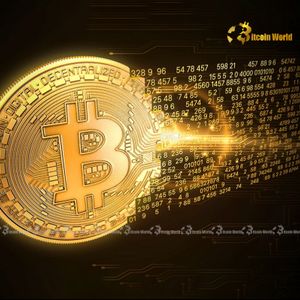Beyond the Skepticism: Blockchain as Viewed by Alessio Vinassa
4 min read
A case for balanced thinking in the age of decentralization and digital transformation Disruption never arrives quietly. From the internet to AI, every breakthrough has been met with a mix of optimism and skepticism—and blockchain is no exception. As this technology continues to evolve, its narrative sits at the intersection of innovation, scrutiny, and transformation. For some, blockchain is the architecture for a trustless, decentralized future. For others, it’s a hype-driven experiment riddled with volatility and overreach. But to dismiss it outright is to miss the opportunity for thoughtful dialogue—and progress. “Skepticism is a sign of intellectual engagement,” says entrepreneur and Web3 advocate Alessio Vinassa. “It forces us to ask hard questions, demand real value, and separate foundational technologies from fleeting hype.” And that’s the point: skepticism isn’t the enemy of development. Informed doubt is what strengthens ideas—and builds better systems. The Inevitable Resistance to Innovation History is full of examples where game-changing technologies were initially dismissed. The internet was once branded a fad. Mobile phones were mocked. Even cloud computing faced early doubts from enterprise giants. Blockchain is now walking the same tightrope. It faces scrutiny for energy use, unclear regulations, and perceived ties to speculation. Yet beneath these concerns lies a deeper movement: the reimagining of trust through decentralized infrastructure. According to Gartner’s 2024 projections, 20% of global economic infrastructure will rely on decentralized platforms by 2030. Meanwhile, institutions like MIT, the World Bank, and the European Commission are exploring blockchain’s role in international development, identity, and sustainability. “The goal isn’t blind adoption,” says Vinassa. “It’s informed progression.” Doubt That Drives Innovation Skepticism becomes productive when it leads to critical thinking—not complacency. It’s what pushes innovators to refine, rethink, and rebuild. Environmental concerns over energy-intensive proof-of-work chains led to innovations like proof-of-stake, cutting energy use by 99.5% on platforms like Ethereum. Security concerns sparked breakthroughs in privacy-preserving technologies such as zero-knowledge proofs and multi-party computation. Regulatory uncertainty is giving rise to proactive collaboration between governments, startups, and academia to establish clearer guardrails. “We should question everything,” Vinassa emphasizes, “but not reject everything. Healthy doubt is how we evolve. Cynicism, however, is how we stall.” Avoiding the All-or-Nothing Trap Much of the criticism around blockchain stems from binary thinking: either it’s a silver bullet, or it’s a scam. But like any tool, blockchain’s impact depends on how it’s used—not whether it exists. Vinassa urges decision-makers to focus on the real-world applications already reshaping global systems: Supply chain transparency in agriculture, food safety, and luxury goods Cross-border payments that reduce cost and settlement time Identity verification systems in underbanked regions Decentralized governance models for civic and protocol-based decision-making “It’s not about utopia,” Vinassa says. “It’s about building systems that are marginally better today—and exponentially better over time.” Leading with Balanced Perspective What defines a true thought leader isn’t blind evangelism—but measured vision. Alessio Vinassa exemplifies this through his call for balance: Developers should prioritize real-world usability. Regulators must engage in collaborative development, not confrontation. Enterprises should explore blockchain as a long-term structural tool, not a trend. “The goal isn’t to convert skeptics overnight,” Vinassa reflects. “The goal is to keep building responsibly, educating transparently, and listening—even to the doubters.” This approach resonates not just within crypto-native spaces, but across industries undergoing digital transformation—from finance and logistics to international governance and business growth. A Call for Curious Pragmatism All breakthrough technologies walk the same path: they are misunderstood, challenged, refined—and then accepted as necessary. Web3 and blockchain are no different. Instead of asking “Is this overhyped?” we should be asking: What problems are worth solving with decentralized models? How can we build responsibly while still pushing boundaries? What structures must evolve to support global adoption at scale? “We must remain vigilant, yes—but also curious,” Vinassa explains. “We must test assumptions, question claims, and support innovation that earns trust.” Conclusion: From Doubt to Dialogue Skepticism, when applied constructively, becomes a catalyst for innovation. It challenges technologists to mature their systems, encourages transparency, and brings legitimacy to new ideas. But cynicism—the kind that shuts down discourse—only delays business growth, dampens entrepreneurial momentum, and underestimates the value of global collaboration. “Skepticism should be a doorway, not a dead end,” Vinassa concludes. “If we channel doubt into dialogue, we can build something worthy of belief—not just hype.” And that’s how blockchain’s future will be earned: not through noise, but through clarity, responsibility, and collective effort. To know more about Alessio Vinassa and his business philosophies, visit his website at alessiovinassa .io . You can also find and follow him on the following social platforms: Instagram – Facebook – X Disclaimer: This is a sponsored press release for informational purposes only. It does not reflect the views of Times Tabloid, nor is it intended to be used as legal, tax, investment, or financial advice. Times Tabloid is not responsible for any financial losses. The post Beyond the Skepticism: Blockchain as Viewed by Alessio Vinassa appeared first on Times Tabloid .

Source: TimesTabloid



